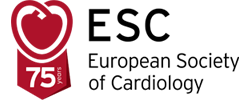Over the last two decades, the paradigm that the heart is a terminally differentiated organ has shifted by the finding that adult cardiomyocytes retain (low) proliferative capacity. Nevertheless, the ability of cardiomyocytes to repair injured myocardium remains limited. To improve the regenerative power of the heart, the developing embryo has served as a blueprint for the correct formation of cardiac tissue. Furthermore, the revolutionary discovery that the mammalian neonatal heart briefly maintains renewal capacity after myocardial infarction (MI)1 has provided a wealth of information regarding the requirements for regeneration. Investigation of these cardiac (re)generating models has resulted in the identification of several mechanisms and pathways, including Hippo/YAP, that can be harnessed to improve cardiomyocyte proliferation and regenerate the heart. However, it is becoming increasingly clear that regeneration is more than merely dividing cardiomyocytes.
The highlighted study led by James Martin and team goes beyond the cardiomyocyte-focused approach and shows that regeneration requires a specific microenvironment established by distinct cardiomyocytes, fibroblasts, and macrophages. They investigated two cardiac renewal models namely neonatal MI and an adult model with cardiomyocyte specific expression of YAP5SA. This constitutively active form of YAP was previously shown to induce regeneration and to reprogram cardiomyocytes to an embryonic day 14.5 foetal state2. By combining spatial transcriptomics, single cell RNA sequencing, and sophisticated data analysis, the authors identified an adult cardiomyocyte population (aCM2) with a more foetal regenerative profile as compared to the more abundant aCM1 population. Surprisingly, a very similar population of cells was observed in non-renewing human MI samples suggesting that regeneration requires additional cues to occur.
The authors continued to investigate the microenvironment in which aCM2 cells reside in both cardiac renewal models and found a striking overlap in location with C3 expressing fibroblasts and macrophages carrying the C3 receptor C3ra1+. Interestingly, in the neonatal model this cellular triad only formed after MI in renewing mouse hearts and not in non-regenerating hearts one week after birth (p8). The importance of the complement system signalling was confirmed since loss of either C3 or C3ar1 impaired the neonatal regenerative window and reduced the regenerative effects of YAP5SA therapy via disruption of the pro-renewal microenvironment. This resulted in less CM disassembly and proliferation, and altered the fibroblasts to a more fibrotic phenotype.
Overall, this study highlights that combining relevant regenerative models with strong techniques such as spatial transcriptomics can result in the identification of intricate signalling and cellular interplays that underlie mammalian cardiac regeneration that go beyond the cardiomyocyte.


 Our mission: To reduce the burden of cardiovascular disease.
Our mission: To reduce the burden of cardiovascular disease.